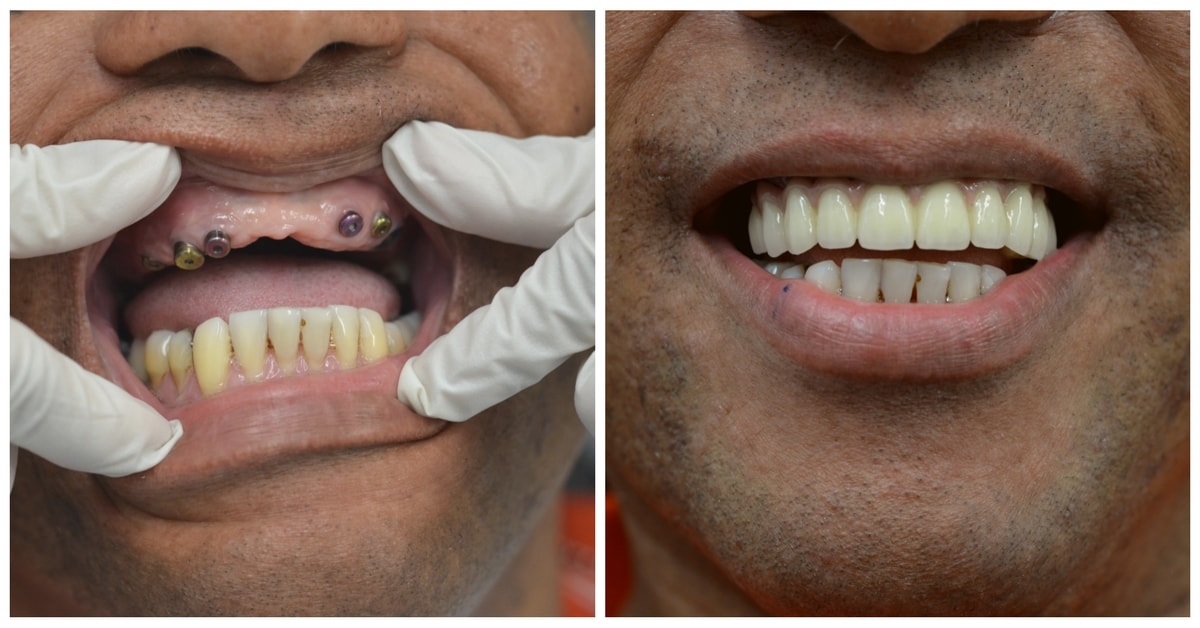How Dental Implants can Save You Time, Stress, and Money.
How Dental Implants can Save You Time, Stress, and Money.
Blog Article
The Ultimate Guide To Dental Implants
Table of ContentsDental Implants Things To Know Before You BuyDental Implants for Dummies9 Simple Techniques For Dental ImplantsExcitement About Dental Implants
are medical tools surgically dental implanted right into the jaw to recover an individual's capability to eat or their appearance. They give assistance for artificial (phony) teeth, such as crowns, bridges, or dentures. When a tooth is lost as a result of injury or disease, an individual can experience issues such as rapid bone loss, defective speech, or adjustments to chewing patterns that lead to pain.
Framework of The Oral Implant System selecting oral implants, talk with your oral provider about the possible benefits and risks, and whether you are a prospect for the treatment. Points to take into consideration: Your general wellness is a vital variable in establishing whether you are an excellent prospect for dental implants, how long it will require to recover, and how much time the implant may remain in location.
Smoking cigarettes might influence the recovery process and decrease the long-lasting success of the dental implant. The recovery procedure for the dental implant body might take numerous months or longer, during which time you normally have a momentary joint in place of the tooth. the dental implant treatment: Carefully comply with the dental hygiene instructions provided to you by your dental copyright.
Unknown Facts About Dental Implants
Implant failing can cause the need for an additional surgical treatment to fix or change the implant system. Brings back the ability to eat Recovers aesthetic look Aids keep the jawbone from shrinking as a result of bone loss Maintains the health and wellness of the bordering bone and gums Helps keep nearby (nearby) teeth steady Enhances lifestyle Damage to bordering natural teeth during implant positioning Injury to the surrounding cells throughout surgery, such as sinus opening Injury during surgery (for example, crack of bordering jawbone) Insufficient function, such as seeming like the teeth do not attack with each other usually An experience that the tooth hangs or turning in location arising from a joint screw loosening up Implant body failing (looseness of the implant body) as a result of systemic infection, which might be more probable in clients with unchecked diabetes mellitus due to neighborhood infection in bone and gums sustaining the implant body due to delayed recovery, which might be most likely in patients that smoke Trouble cleaning the periodontals around the implant, causing inadequate dental hygiene Neglected periodontal illness Post-surgical pins and needles as a result of nerve impingement or damages Constantly inform healthcare service providers and imaging specialists that you have oral implants prior to any magnetic resonance imaging (MRI) or x-ray procedures.
FDA is not knowledgeable about any kind of unfavorable events reported for MRI or x-ray treatments with dental implants. Oral implants systems are typically made of products that follow global consensus standards of the International Company for Standardization (ISO) or ASTM International. These requirements have information of what makes a safe product.
Various other materials such as gold alloys, cobalt-based alloys, titanium alloys, or ceramic products are sometimes made use of. The safety and security accounts of these materials are well-known. Dental dental implant systems are assessed according to global agreement requirements. Biocompatibility screening, to show that bodily call with the gadget does not cause issues like irritation or sensitive response, belongs to the examination that helps guarantee the products in the oral implant system are risk-free and do not create unfavorable effects when dental implanted in people.

Dental Implants for Beginners
Some individuals are not eligible for oral implant surgical procedure. It is for dental cosmetic surgeons to run on individuals with: intense illnessuncontrollable metabolic diseasebone or soft tissue illness or infectionIf these concerns are solved, a person can have the surgical treatment. Dental Implants. In, oral doctors avoid operating on people with: If individuals with any of the above go through oral implant surgical procedure, there is a greater danger of the implant falling short
Some people have a jawbone Dental Implants problem that protects against enough bone for an implant from creating. In such situations, a specialist might require to carry out a ridge alteration. This includes lifting the gum to reveal the area of flawed bone. The surgeon will certainly then utilize a bone or bone alternative to repair and accumulate the area.
Oral implant surgical procedure is a personalized procedure. Provide you time to recover. Connect the blog post and final crown, bridge or denture.
Next off, your cosmetic surgeon will carefully place the oral implant right into your jaw. Your specialist will reposition your gums and close the laceration with stitches (Dental Implants). If your implant is near the front of your mouth, your dental practitioner will certainly make a short-lived tooth for you to use till you heal. That means, you won't have a void in your smile while you recuperate.
See This Report about Dental Implants
Your copyright can inform you what to anticipate in your scenario. Throughout the recovery stage, your jawbone needs to fuse to the oral implant. This procedure, called osseointegration, is important for security and lasting success. This procedure can take anywhere from 3 to 9 months. Sometimes, it might take longer.
When your implant heals, your dental practitioner can affix the joint (little adapter blog post) and your last repair (crown, bridge or denture). This generally takes concerning one hour to finish and might hop over to these guys need a 2nd minor surgical treatment. You should not really feel any kind of discomfort during your oral implant treatment because your service provider will certainly make use of drug to numb your periodontals.
Report this page